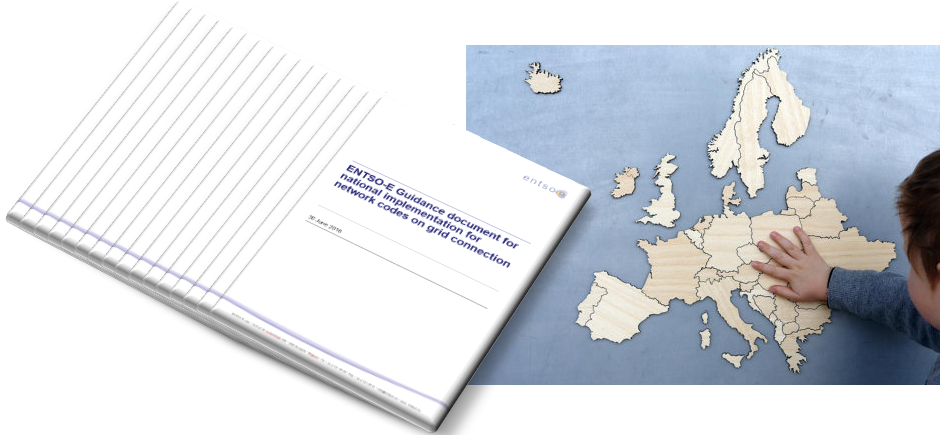ENTSO-E Connection Codes Implementation Guidance Documents - HVDC and DCC
Overview

Europe currently has three connection network codes: Requirements of generators (RfG), Demand Connection (DCC) and High Voltage Direct Current (HVDC).
The Member States have the obligation to implement these codes no later than three years after their entry into force. Within this timeframe the Member states have 2 years to define the national specifications for the so-called non-exhaustive requirements.
In order to support the implementation at national level and also in line with the legal requirements of these network codes ENTSO-E has drafted a set of 18 non-binding implementation guidance documents which we currently put forward for consultation. These guidance documents are addressed to the transmission system operators and other system operators concerning the elements of the codes requiring national decisions. They shall explain the technical issues, conditions and interdependencies which need to be considered when complying with the requirements of this Regulation at national level.
ENTSO-E has consulted these IGDs from the RfG persepctive from 1July–15 August 2016. The comments received resulted in the update of the IGDs which were published on 17 November.
Now ENTSO-E starts the consultation of the updated IGDs from the DCC and HVDC perspective, consultation which will close on 16 January 2017. Based on the outcomes of this second consultation ENTSO-E will further update the IGDs and will publish these updates on 7 March 2017.
More information can be read here.
A preview of all the questions in this consultation can be accessed here.
All the IGDs are listed below and can be downloaded from the following link or individually below:
- Compliance monitoring
- Cost-benefit analysis
- Fault current contribution from PPMs & HVDC converters
- Harmonisation
- Instrumentation, simulation models and protection
- Making non-mandatory requirements at European level mandatory in a country
- Need for synthetic inertia for frequency regulation
- Parameters of non-exhaustive requirements
- Parameters related to frequency stability
- Post fault active power recovery
- Reactive power control mode
- Reactive power management at transmission/distribution interface
- Reactive power requirement for PPMs & HVDC converters at low / zero active power
- Real time data and communication
- Rate-of-change-of-frequency withstand capability (RoCoF)
- Selection of national parameters for RfG type classification
- Special issues for Type A generators
- Voltage related parameters for non-exhaustive requirements
Why your views matter
ENTSO-E is consulting the IGDs for three main reasons:
- Although the main addressees of the IGDs are the system operators, the connection codes have a significant impact on manufacturers, power generating module operators, demand facilities and distribution networks.
- The IGDs are drafted as supporting material for the connection codes implementation at the member state level and shall aim to give guidance for national specifications for non-exhaustive requirements.
- The IGDs are legally requested to be consulted with stakeholders before their release within the six month of the entry into force of the Regulations.
.
What happens next
Based on the outcomes of this second consultation ENTSO-E will further update the IGDs and will publish these updates on 7 March 2017.
Audiences
- ENTSO-E stakeholders
Interests
- Connection Network Codes

Share
Share on Twitter Share on Facebook